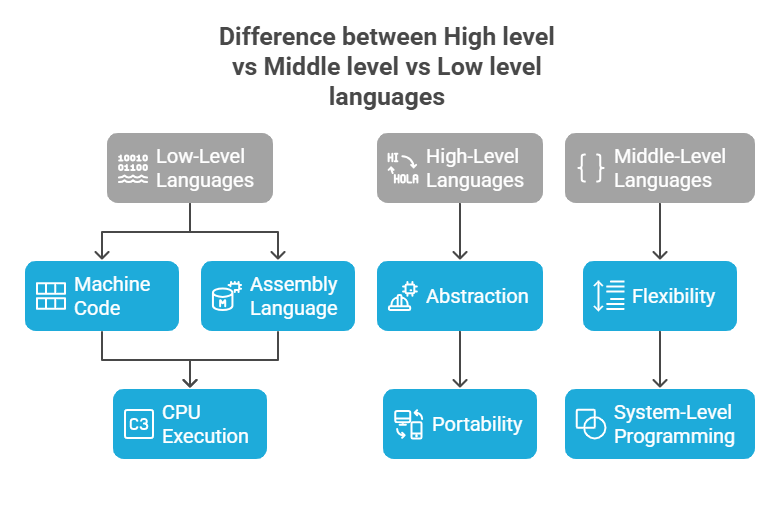High level vs Middle level vs Low level languages

Programming languages can be divided into groups according on how abstract they are from computer hardware. As a result, languages are categorized as low, high, and occasionally middle-level.
Low-Level Languages
Low-level languages closely resemble the hardware architecture and native instruction set of a machine.
- The lowest form of a low-level language is machine code, often known as binary. It is made up of a series of zeros and ones, which are commands that are carried out immediately by the central processing unit (CPU) of a computer. Every instruction carries out a very precise function. It is impractical for humans to write programs in machine code directly.
- ASM, or assembly language, is a step up from machine code. It is a translation of machine language instructions that can be understood by humans. The machine code instructions of the architecture and assembly language have a very strong, typically one-to-one connection. It represents instructions with mnemonics, which are brief groups of letters (such as “ADD” or “MOV”). An assembler is a program that transforms assembly language into machine code that can be executed. A program created for one processor architecture won’t run on another because assembly language is processor specific.
High-Level Languages
High-level languages are designed to be more like human languages and independent of computer technology. They abstract computer hardware like register usage and memory access to emphasise programming ideas. Due to their increased abstraction, they are easier to learn and do more with less code. High-level languages provide portable programming by converting into instructions for many processors. High-level languages include Ada, Algol, BASIC, COBOL, C language, C++, Java, FORTRAN, LISP, Pascal, and Prologue.
Middle-Level Languages
C is one of the languages that is frequently referred to as middle-level. Their capacity to blend elements of both high-level and low-level languages accounts for this classification. A middle-level language blends the flexibility and control of assembly language with the best features of high-level languages. They make it possible to directly manipulate the fundamental building blocks that the computer uses to operate: bits, bytes, and addresses. They are ideal for system-level programming because of this capability.
